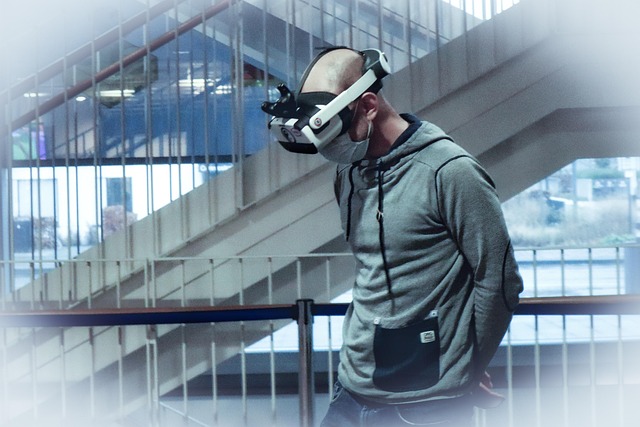In the ever-evolving landscape of digital interaction, the integration of haptic feedback within virtual reality (VR) and augmented reality (AR) is reshaping our experiences and deepening our connection to the metaverse. Haptic feedback is the technology that allows us to “feel” what we see and hear in a virtual environment, bringing an unprecedented level of immersion and realism.
Imagine stepping into a virtual world where the ground beneath your feet feels solid, where the weight of an object can be sensed through gentle vibrations, and where the slightest touch on a virtual surface becomes a tactile sensation. This is the magic of haptic feedback. It bridges the gap between reality and the digital realm, allowing users to engage more fully with their surroundings.
In virtual reality, the ability to replicate physical sensations can transform gameplay and social interactions. Whether it’s the feeling of resistance when you pick up an object or the shudder of an explosion nearby, haptic feedback creates an emotional intensity that enhances user engagement. Gamers can feel the thrill of racing through a landscape or the fear of encountering a virtual threat, making every moment more vivid and impactful.
Similarly, in augmented reality, haptic feedback enhances the overlay of digital content onto the physical world. Imagine reaching out to interact with a 3D holographic object that responds to your touch with realistic sensations. This interaction not only fosters a deeper understanding of the digital content but also enriches our daily lives by making digital information feel tangibly integrated with our surroundings.
As we explore the metaverse, haptic feedback becomes a key player in defining our digital experiences. It provides the missing link that allows users to engage with virtual environments in a manner that mimics real-world sensations. The emotional responses elicited by tactile interactions can foster connections among users, turning solitary experiences into shared adventures. This social aspect is crucial in establishing communities within the metaverse, where relationships can thrive on shared experiences that feel real, even in a digital setting.
The potential applications of haptic feedback extend beyond gaming and social interaction. Industries such as education, healthcare, and training can harness the power of tactile sensations to enhance learning outcomes and skill acquisition. For example, medical students can practice surgery in a simulated environment, feeling the resistance of tissues and the precision required for certain procedures. This hands-on experience prepares them for real-life situations, improving their confidence and competence.
As we continue to push the boundaries of what is possible in VR and AR, the importance of haptic feedback cannot be overstated. It is the key to creating fully immersive experiences that feel genuine and resonate emotionally. By integrating tactile sensations into our interactions, we are not just observing the metaverse; we are truly experiencing it.




